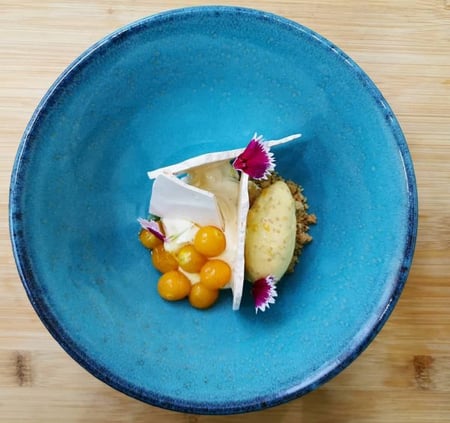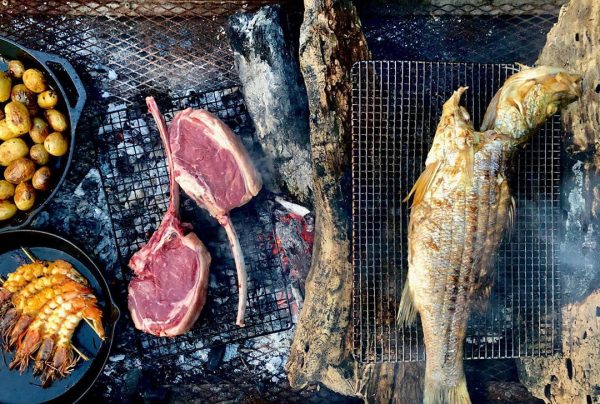Monday, September 2nd, 2019.
In this Daily: How Seasonal Food and Products Influence Dining in Las Catalinas
As the atmospheric conditions change in Guanacaste, the environment changes as well, sending a shift through the entirety of the food web. Fruits, vegetables, herbs, and other plants are usually the first to react to these changes, with animals reacting in response, both of which can lead to secondary responses, creating ripples that can bounce around the food web for months to come.
These local, timely effects interact with more global patterns, as well as the ripples of previous changes in the seasons, creating a constantly shifting ecosystem throughout the year.
For a chef, timing these events to collect ingredients just as they’re at their peak can be very important. This timing is particularly important to Chefs Gilberto Briceño and Saul Umaña, whose expertise is greatly based on seasonal cuisine.

By staying on top of these ecological trends in the environment, Chef Briceño is able to get common products just as they’re at their finest, and source more rare ingredients when conditions are ideal, leading to a meal that is deeply tied to the country and expresses its flavor.
Cultivating Relationships to Source Seasonal Food and Products
Chef Umaña’s philosophy at the Santarena Hotel’s Ponciana Restaurant is rooted in elevating ingredients to their zenith. The goal of Chef Gilberto Briceño is to use local products to create cuisine that will bring people from all around the world.
Both of these sets of ideals rely on sourcing ingredients at their peak, or in the case of some of Chef Gilberto’s ingredients, at the only times that they are available to be consumed.
The key is cultivating a network of relationships with local suppliers, the fishermen, farmers, foragers, and producers that are constantly involved with their respective environments and can track these seasonal changes to provide products just as they are at their peak. These products can range from tuna sourced just as cool water currents reach Guanacaste to plants that only bear fruit for a few days of the year to the first harvest of purple corn to the last cuts of slowly dry-aged beef.

Each brings a unique flavor carefully monitored and cultivated to reach the plate at the perfect time.
Inviting Seasonality into the Menu
For both Chef Briceño and Chef Umaña, the challenge of using seasonal ingredients inspires creativity within their cooking. Even within set menus like those found at Ponciana Restaurant, or set concepts like those of Chef Briceño’s Pop-Up dinners in the Beach Club, there is room to let dishes breathe and come to life.
“Even the exact same dish served week after week should taste a little bit different,” Chef Briceño explains. “It makes it more enjoyable for our guests and a lot of fun for us to cook, because we can explore and make things feel fresh and interesting.”
Take last week’s Tokyo Street Food dinner as an example. Chicken from a local poultry provider had reached prime condition, which influenced the ramen starter. Using chicken bone to create a variation on the traditional miso, dark meat to add a rich fatty balance to the locally cultivated vegetables, and a fresh egg to top off the dish, a familiar menu item became a glimpse into the seasonal food of the region.
When dining on Chef Briceño or Chef Umaña’s cuisine, nearly every ingredient has a specific reason for being on the plate on that specific day. This pursuit of seasonality adds excitement and variation to the preparation of each meal, a passion for cooking that they pass on to every guest.